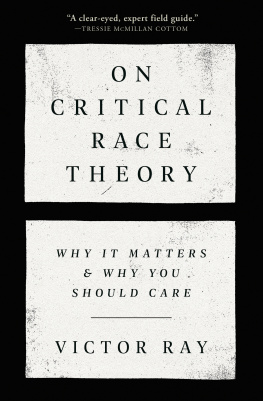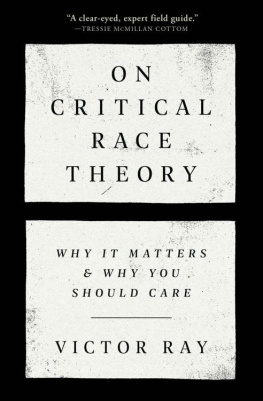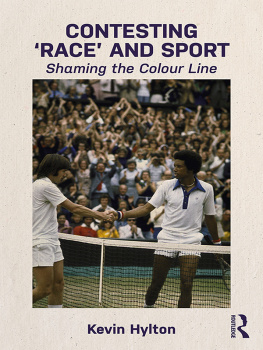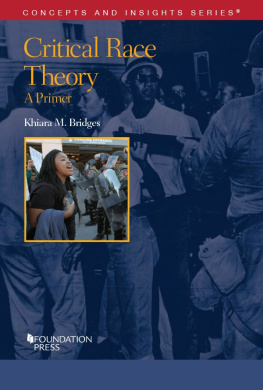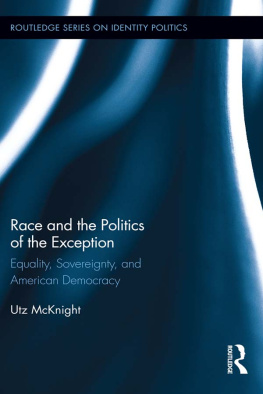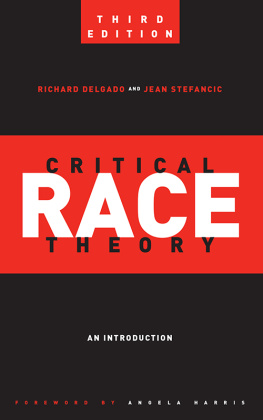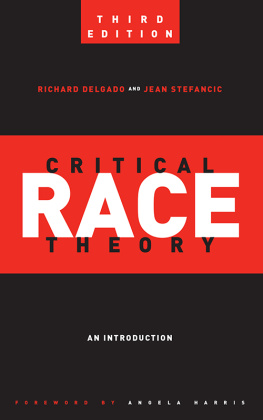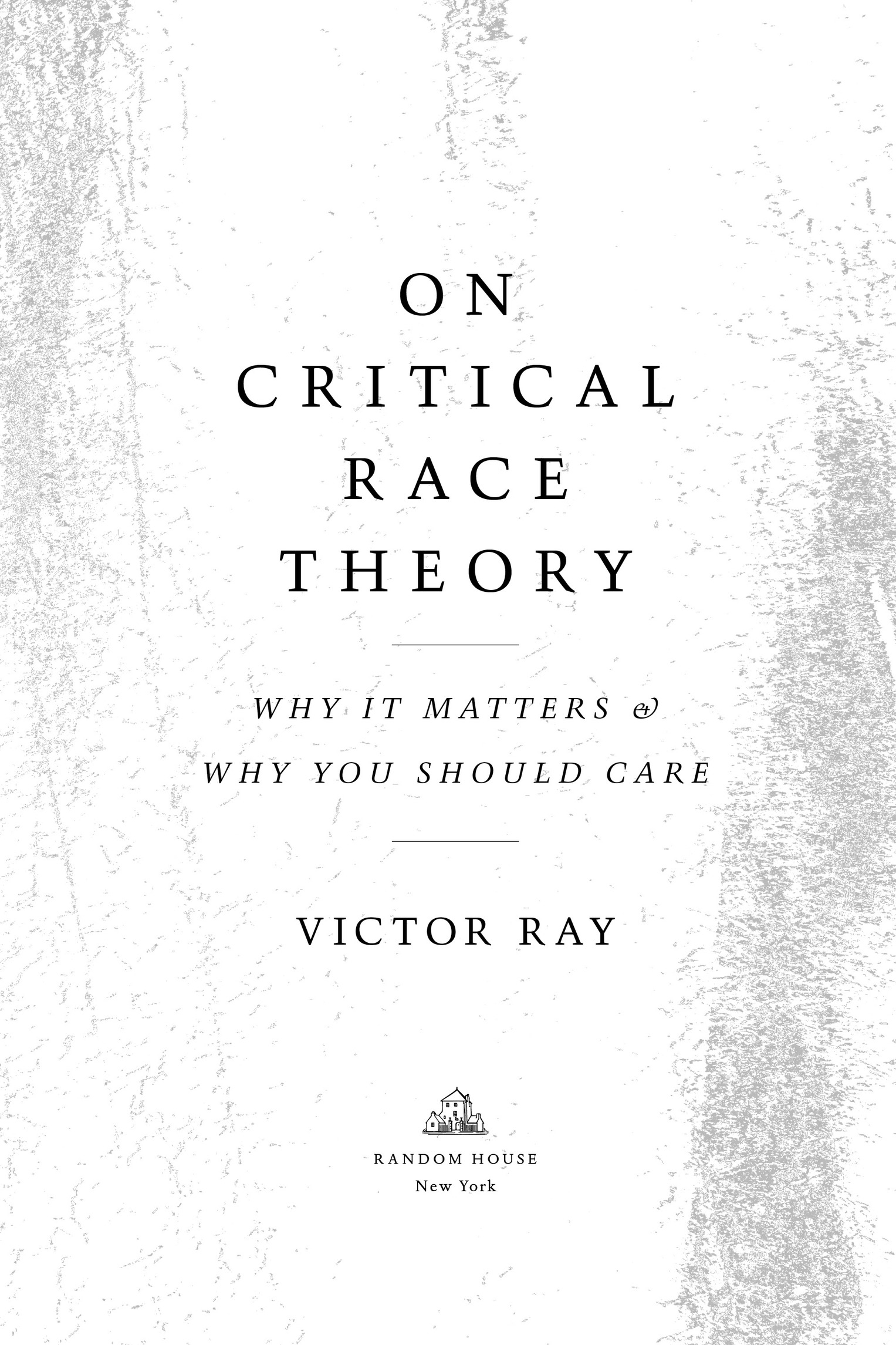Copyright 2022 by Victor Ray, Ph.D.
All rights reserved.
Published in the United States by Random House, an imprint and division of Penguin Random House LLC, New York.
Random House and the House colophon are registered trademarks of Penguin Random House LLC.
PREFACE
It has been reported that Malcolm X once said that if you have no critics, youll likely have no success. If indeed having critics is the key to success, then critical race theorists have every reason to be wildly optimistic.
Kimberl Crenshaw
I was two years old the first time the cops were called on my family. At a parade in downtown Pittsburgh, my uncle Harold lifted me to his shoulders so I could see over the crowd. His behaving as loving uncles do led someone to jump to the conclusion that my dark-skinned uncle had abducted a light-skinned toddler. They told the police. Kidnappers arent known for taking stolen children to parades, or anywhere with large crowds. Nonetheless, the police questioned my uncle, letting us go when they were satisfied that we were family. Variations of this scene repeated throughout my life, from infancy to the present. When I was about ten, a white woman driving past our trailer called the police on my dad for playing with me in the yard, again criminalizing family joy. When we were teenagers, white clerks followed my brother around stores where I walked unbothered. Questioning (and threatening) stares still occasionally greet my mixed-race family as we go about normal tasks. Even now, when my family gets together, we are sometimes asked if, and how, we know each other.
My experiences with racism reflect aspects of Americas broader racial system. The assumption that my uncle and I werent family is tied to our nations peculiar racial categorization system, with its singular one-drop rule and its long history of bans on interracial marriage. Such bans would have outlawed my parents union and were intended to prevent my birth. Assuming my Black male caretakers were dangerous and deviant, rather than loving and conscientious, reflects the routine criminalization of Black peoples family lives and gendered stereotypes about Black masculinity. And as a seemingly endless series of videos of police violence against unarmed Black men has shown, calling the police and falsely accusing a Black man of stealing a child put lives at risk, regardless of the fact of innocence.
By connecting individual experiences to broader patterns of racial inequality, stories like mine have shaped critical race theory. Critical race theory recognizes that narratives influence our understanding of the world and uses stories as an empathetic bridge across racial divides. Stories can help outsiders understand and connect with the unfairness, capriciousness, and cruelty of racism. Critical race theorists recognize that narratives may not, in and of themselves, be compelling evidence. So they couple stories with meticulous research highlighting Americas profound racial inequality, showing how race and racism shape peoples lives. By highlighting the stories of how people of color navigate and survive American racism, critical race theory provides perspectives often conspicuously absent from mainstream books, movies, and media. One reason Im writing this book is that people are trying to erase and turn back the relatively minor inroads critical race theorists have made in getting these stories told.
I was introduced to critical race theory as an undergrad at Vassar College when I transferred there from the Borough of Manhattan Community College (BMCC). Contrary to the idea of colleges as radicalizing institutions, my introduction to critical race theory was more confirmation than revelation. I enrolled at BMCC right after 9/11, when, like many New Yorkers, I reevaluated my life. BMCC was just blocks away from the World Trade Center and the college had lost students during the attack. When I started taking classes there in February 2002, the college served a broad swath of New Yorkers and students from all over the world. I quickly became involved in student government and antiracist organizing, doing things like testifying at City Hall against tuition increases for some of New Yorks poorest students. After two years I moved to Vassar, a small liberal arts college in upstate New York. The contrast between these two schools was intense, and it was clear to me that they were preparing people for different places in the social hierarchy. Despite the glaring resource differences between these schools, I watched administrators at both use similar tactics to avoid meeting antiracist student demands for things that racial justice activists have been fighting for since the 1960s.
My personal history primed me to understand critical race theory because I had witnessed the highly variable treatment received by my family members of different hues. Because I am often read as white, I heard the ways white people, thinking they were alone, sometimes spoke about people of color. These interactions included the relatively subdued (but nonetheless harmful) racism thats common in American culture, like asking if I felt safe living near Black people, or jokes about the supposed inferiority of Black culture or language. When I read the foundational critical race theory article Whiteness as Property (see chapter 6), which used passing as a launchpad to explore Americas history of racial plunder, I knew I had found an intellectual home.
The vast resource gap between BMCC and Vassar also left me with the sense that the superficial explanations for racial inequality I had previously been taught were at best wrong, and at worst intentionally misleading. Personal ill feelings, or the caricatured backward racist, couldnt explain the callousness of social policies designed to target and shorten Black life. I was also bothered by the racial liberalism I encountered among some Vassar studentsa kind of smug paternalism that assumed white folks knew what was best for people of color. I knew that after graduation these students and their paternalism were going to run things in business, the media, and politics. I sometimes felt that although I could (but didnt) pass for white, I was still the blackest person some of these students had sustained interactions with.
Critical race theory also appealed to me because it critiqued inadequate explanations of racial inequality across the political spectrum. Critical race theorists skewered the Rights overt hostility to people of color, evident in explicitly anti-immigrant and anti-Black policy prescriptions. Critical race theorists also criticized liberals tepid acceptance of diversity on unequal terms, such as organizational policies that avoid confronting racialized power and resource differences in the workplace. Once I learned the core concepts developed by these critiques, I had a language to describe and understand the sometimes-hidden processes of discrimination, exclusion, and structural racism that shape the social world. I learned that race was a social construction that helped to explain the peculiar history shaping my racial identity. (Spoiler: that history shaped your racial identity, too.) The concept of structural racism allowed me to see how race is used to divvy up resources from classrooms to boardrooms, sometimes intentionally but sometimes as a by-product of nonracial actions. In other words, ideas from critical race theory did exactly what good ideas are supposed to do, allowing me to better see, understand, and navigate the world.

